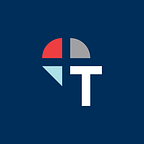Tips for Employees Navigating Health Insurance Options During Open Enrollment
This is the second in a series of posts focused on new insights from our personal finance coaches about the financial realities of COVID-19, which can help workers navigate these turbulent times.
By Elise Nussbaum, TrustPlus Personal Finance Coach
Health insurance open enrollment season is upon us, the time each year to start, stop or change your health insurance plan. It takes on newfound importance this year amidst our global pandemic, especially for low-and moderate-income workers bearing the brunt of the economic pain and experiencing higher rates of negative health outcomes.
What does this mean for me?
If you don’t qualify for insurance through your employer, then starting November 1, you can sign up via HealthCare.gov for a 2021 Marketplace health plan. Coverage will start on January 1, 2021. The deadline to sign up is December 15, 2020. If you do get health insurance through your employer, speak to them about their plans, how to enroll, and when the deadline to sign up is.
What do I need to consider when exploring my options?
To ensure your health insurance meets your financial needs, consider the following:
- Consider what you pay now and what’s covered. Identify your health insurance and medical costs over the past year and familiarize yourself with your existing plan.
- Consider what you expect your healthcare needs to be in 2021. If you think your healthcare coverage needs will remain the same and your current plan is affordable, maybe you will end up staying with the same plan. If you anticipate a change in your healthcare needs, start to look at what else is out there.
- Consider the best option for your circumstances. For example, one of my clients with an underlying condition had a plan with low premiums. We discussed how low premiums can sometimes mask higher out-of-pocket costs and lead to unexpected expenses for medical care. Often, it’s worth comparing your medical plan with others even if you’re happy with your plan.
- Consider Health Savings Accounts (HSA) and Flexible Spending Arrangements (FSA). HSAs offer a number of tax benefits as a way to save money for health costs. Your contributions to your HSA are deductible, your employer can make tax-free contributions, and distributions for qualified medical expenses are tax-free. Interest growing in your account is also tax-free, and HSAs are portable, staying with you if you change jobs or stop working. But you must be enrolled in a high deductible plan in order to sign up for an HSA. Notably, the contributions remain in your account until you use them, they don’t evaporate if you don’t use them within the year, as is the case with some FSAs. FSAs allow employees to be reimbursed for medical expenses. FSAs are funded on your terms and offer a number of benefits. You decide how much you want to set aside in each paycheck. Employer contributions can be excluded from your gross income, no employment or federal income taxes are deducted from the contributions, and reimbursements may be tax-free if you pay qualified medical expenses. Also, you’re not required to report FSAs on your income tax return. However, most FSAs are use-it-or-lose-it, meaning you must spend the money in the account by the end of the year.
Need additional guidance on which health insurance option best aligns with your finances? Speak with a TrustPlus Financial Coach today.
CNBC: Five things to watch out for during open enrollment amid a pandemic
IRS: Publication 969 (2019), Health Savings Accounts and Other Tax-Favored Health Plans
TrustPlus is now offering financial coaching services for free for the rest of the year to small businesses and their workers, as well as providing critical resources to protect workers and families impacted financially by COVID-19. Learn more about our relief efforts.
